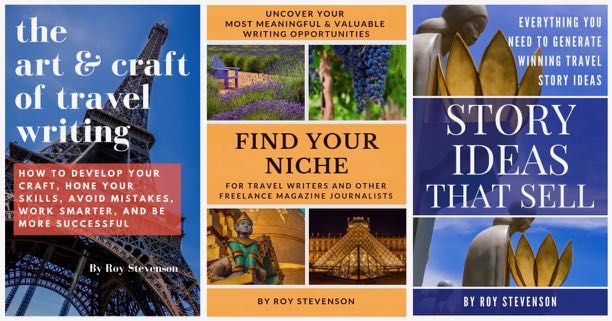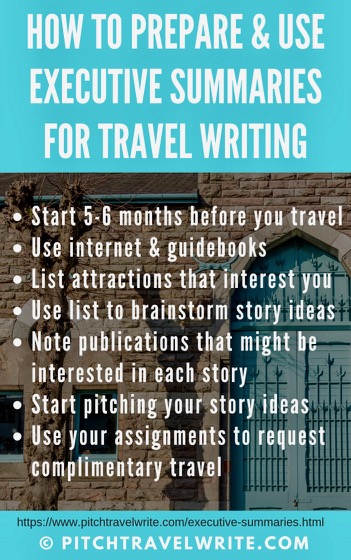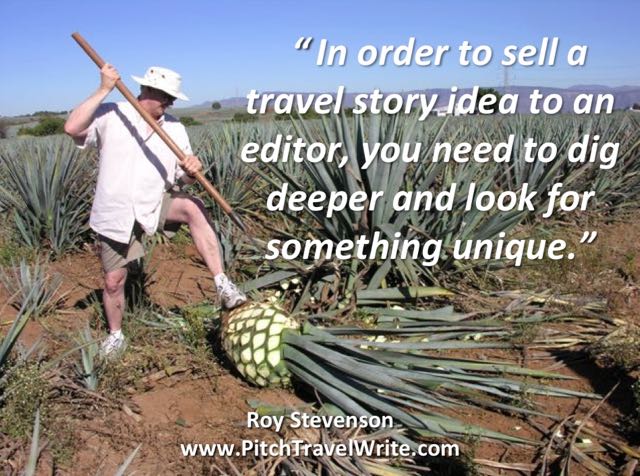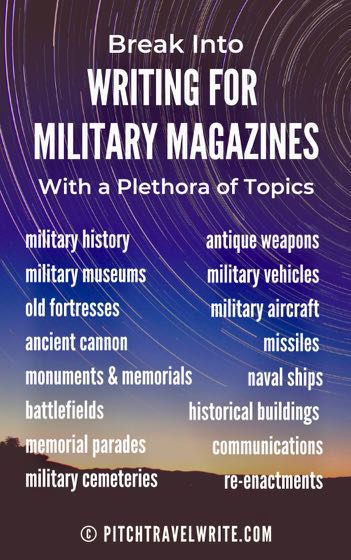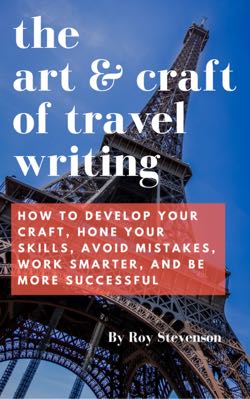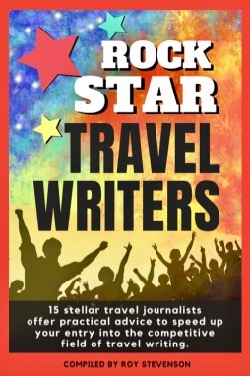- Home
- Story Ideas
- How To Successfully Sell Travel Stories
How to Successfully
Sell Travel Stories
By Roy Stevenson
In order to successfully sell travel stories, it’s important to find a unique angle about each place you visit. Editors are only interested in pitches that highlight something different and exciting for their readers.
One of the ways to keep an edge on your stories, and keep things exciting, is to attempt new experiences everywhere you travel. After all, it’s up to you as a travel writer to learn what’s unique about a place or a culture so you can help your readers gain a deeper understanding and learn something new.
Human beings as a general rule don’t like change. We surround ourselves with things we like and get comfortable in our own little world. There’s nothing wrong with this - it’s the thing that makes us happy to be home after a trip.
When we travel, we have a natural tendency to seek out things that are familiar and comfortable. But as a travel writer, feeling comfortable while you’re on the road can be detrimental.
To keep your edge, this means traveling outside your comfort zone frequently in order to come up with angles that sell travel stories. This can be both difficult and frustrating. In fact, it’s an acquired behavior that doesn’t come naturally to most of us.
We all have our own, unique interpretation of things that are foreign to us. As a travel writer when you take the step to experience a place for what it is, and what it means to the people there, you will be able to more clearly describe the place through that insight. It will help you create a more engaging article.
With these things in mind, here are a few ways travel writers can get out of their comfort zone and into experiences and stories that people love to read, and sell travel stories that interest your readers.
Sell Travel Stories by Trying Foreign Foods
No matter where we go, we all need to eat. This makes food one of the most important things you can experience and write about. Readers want you to make their mouths water and their taste buds tingle.
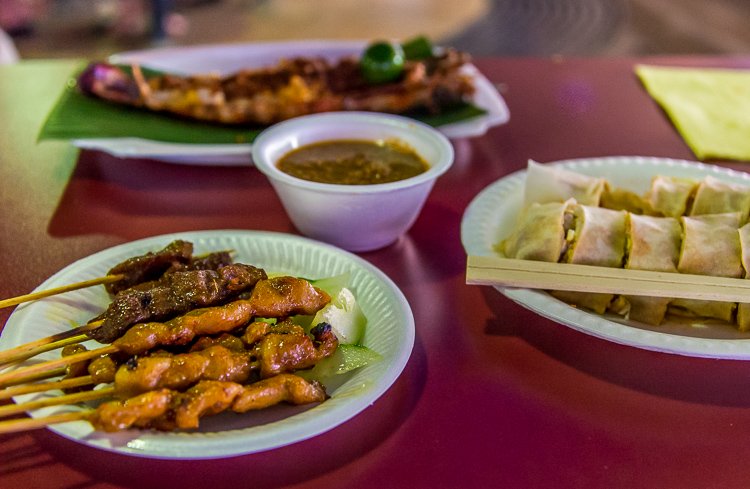 Some of our favorites foods in Singapore include satay, popiah and chili prawns.
Some of our favorites foods in Singapore include satay, popiah and chili prawns.Some countries provide us with food experiences way outside our comfort zones. Try eating mule, century eggs, durian, pig’s blood, or snake; all are considered delicacies in certain parts of Asia.
In Hong Kong we were lucky to have some local friends to introduce us to century eggs (a.k.a. hundred-year-egg or thousand-year-egg). They looked like they had been sitting around for at least a hundred years. It was something we wouldn't have ordered on our own.
Century eggs look like hard-boiled eggs except with a brownish-black coloring - not very appetizing. It wasn’t much help when our friends advised us to spit them out if we didn’t like them. We wondered what we in for.
We cut into our eggs, smelled the slight sulfuric odor, and took a bite. Well, they weren’t as bad as we thought, but we didn’t like them either. We didn’t spit them out.
It was a fun experience, even though the eggs weren’t to our liking, we moved on to the next dishes which were much more enjoyable.
Even if you don’t wander far from your own country, you can experience culture shock from food.
Several years ago we were in Victoria, Canada (that exotic destination just north of the U.S.). As we were finishing our meal in a very nice restaurant, a man at the next table exclaimed loudly and disparagingly to his waiter, “you just don’t get the concept of a good Manhattan chowder”.
We were shocked and embarrassed that a fellow American would make this kind of scene. Obviously, he expected to find the same food he eats at home, even though he was on the opposite coast, and in another country. It’s not logical and it definitely wasn’t polite.
I’m sure the man was not a travel writer, but it was a good lesson that we still remember many years later.
No matter where you travel - try the local food to give you a unique angle to sell travel stories. In most cases it will be enjoyable and something special to write about. If you don’t like it, just set it aside and move on. Try something else until you find something amazing, unique or peculiar to share with your readers.
As a travel writer, your stories about exciting and unusual food give us something to look forward to experiencing ourselves.
Successfully Sell Travel Stories by Embracing the Spiritual Side of the Place
No one would ever describe me as a peaceful, meditative kind of guy. And I’m also not the religious type. But I’ve sat quietly in Buddhist temples in an attempt to absorb the vibe. I’ve sat through vespers in European cathedrals. I attended a cremation ceremony in Bali.
 Burning incense at a temple in Asia is a common occurrance.
Burning incense at a temple in Asia is a common occurrance.We can’t expect to fully understand some of the most important parts of another culture, like religion, in a short visit. But we can, at least, sit quietly and observe.
Any small attempt to gain some insight is a whole lot better than nothing. And if you've spend enough time observing, you can sell travel stories that we can share with your readers based on your experience, your feelings, and what you observed.
In Sedona, Arizona, I had an opportunity to join a spiritual tour that promised to take us to some areas where we could experience the vortex energy scattered around the landscape. People frequently take these tours as a spiritual quest, but I won’t pretend that was my objective.
I was merely curious. I decided to keep an open mind and find out what it was all about. Was the hype true, or not? Maybe I’d learn something I could write about.
At various places along the tour we were give the opportunity to stand in specific areas and feel the energy. Surprisingly, at one particular area I was able to feel energy surges! It was hard to believe, but it wasn’t a fluke. I revisited the same area more than once to test it out, and continued to feel the vibe each time I stepped into that particular space.
I can’t explain it, and I didn’t have a transformative spiritual experience, as some people do. But I learned something about the place - enough that I could write and sell travel stories about my unique experience on that trip.
Give yourself the chance to experience everything that’s important about a place - even if it’s not really your thing. You never know what you might learn and, as a travel writer, be able to talk about in an article. To tell a story about something you've experienced is one of the best ways to sell travel stories to an editor.
Make Observations, not Judgments, to Sell Travel Stories that Will Fascinate Readers
When we travel we’re often tired, jet lagged, bitchy, and hungry. Pile this on top of the fact that we view everything through the lens of our own town, country and culture - and suddenly it’s difficult (or impossible) to appreciate the differences in other cultures.
 Stone carvings at ancient temple, Angkor Wat in Siem Reap, Cambodia.
Stone carvings at ancient temple, Angkor Wat in Siem Reap, Cambodia.There’s nothing wrong with seeing a destination as different. That’s why we travel, isn’t it - to see something different?
So it’s natural to notice the differences. Travel articles are more interesting when you observe differences and describe them to your readers. You can sell travel stories by focusing on your observations. Stories from your point of view tell the story as no one else can tell it.
What doesn’t work is making comparisons with home - especially labeling things as “better” or “worse”. Making judgments transforms your article into something negative. It makes you a critic. And it changes the context of your story.
When my wife and I were living in Belgium, we continuously ran into things that were frustrating and things we didn’t understand. We’re both well-educated, but it’s amazing how dumb you can feel when you’re new in a foreign country. Could I sell travel stories about all the things we didn't understand? You bet!
At the time we lived in Belgium, it was still acceptable to smoke in restaurants. Restaurants would be full of smoke, and these rooms were small and not well ventilated.
We don’t smoke. So we adapted and started arriving at the restaurants at opening time to avoid entering a smoke-filled room. Our intention was to eat quickly and leave.
But a funny thing happened.
When the restaurant doors opened, we asked for a table, and the manager said “I will see if there’s a table available”. Then he would somewhat dramatically cast his eyes around the completely empty restaurant, looking for an available table.
We stood there dumbfounded. All the tables were available from our point of view. What was going on? Why didn’t he just seat us?
After some time we learned that when a person reserves a table at many restaurants, the table is reserved for the entire evening. It doesn't matter what time you show up. They reserve the table and can’t it to someone else. What appeared as “empty” to our eyes was actually “fully booked”.
When we didn’t understand what was happening, it was embarrassing and a little humiliating. And, it’s very tempting to rant about it in an article. Don’t do it.
You can include a travel tip in the “where to eat” section of your article. Say something like “be sure to make reservations” so your readers won’t have a similar experience.
Travel writers have an obligation to their readers to keep their stories entertaining and non-judgmental. Guide your readers to the good stuff without telling them every detail about the frustrations you experienced to gain that knowledge.
Travel isn’t always easy. And on foreign soil it can be downright frustrating and difficult. It’s your job to transcend those things and look beyond. And sometimes everything you go through is actually funny - at least in hindsight.
So get out of your comfort zone and try out different experiences every time you travel. You’ll be doing yourself a favor and the travel stories you sell will be better for it.
Break into Travel Writing
with the Creative Pack
The Creative Pack includes 3 eBooks that are the starting point for every travel writer: dreaming up unique story ideas that you can sell, finding the best writing niches for you based on your interests, passions and experience, and the art & craft of travel writing. They’re the pieces of the puzzle that come before you ever write a query letter to sell your articles to magazine editors.
If you're just getting started in travel writing, this group of resources will help you improve your craft, generate story ideas that sell, and develop your own unique and meaningful niche.
These eBooks can be purchased separately, but when you buy the bundle you'll save more than 10% off individual prices! Learn more here ...

Roy Stevenson is a professional travel writer and the author of www.PitchTravelWrite.com. Over the past ten years, he’s had more than 1000 articles published in 200 magazines, trade and specialty journals, in-flights, on-boards, blogs and websites and has traveled on assignment around the U.S. and to dozens of international destinations.
IF YOU ENJOYED THIS POST, GET UPDATES. IT'S FREE.
